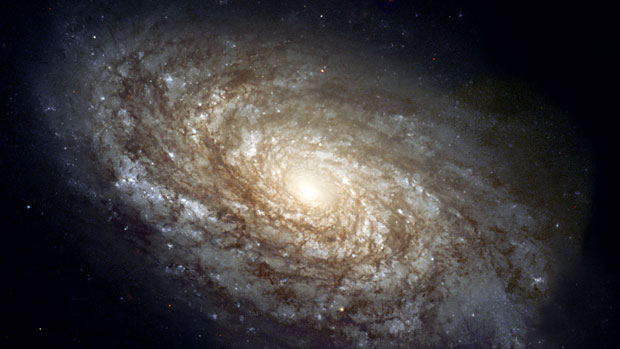New 'Planet Biden' could shed light on origins of solar system
Possible dwarf planet suggests that many worlds lurk undetected beyond the orbit of Pluto

ASTRONOMERS have discovered what they believe to be a new dwarf planet, far beyond the orbit of Pluto, which could shed light on the origins of the solar system.
Scientists Scott Sheppard, from the Carnegie Institution for Science in Washington, and Chad Trujillo, from the Gemini Observatory in Hawaii, reported the find in the science journal Nature. If the new planet's size is confirmed, it will be classified as a dwarf planet – the same category as Pluto – and will open the possibility that there are hundreds more objects out there waiting to be discovered.
What is it called?The object is currently called 2012 VP113, or VP for short. This inspired astronomers to give it the nickname 'Biden' after the US vice president Joe Biden. If its status as a dwarf planet is confirmed, its official name is likely to be more mythological.
The Week
Escape your echo chamber. Get the facts behind the news, plus analysis from multiple perspectives.

Sign up for The Week's Free Newsletters
From our morning news briefing to a weekly Good News Newsletter, get the best of The Week delivered directly to your inbox.
From our morning news briefing to a weekly Good News Newsletter, get the best of The Week delivered directly to your inbox.
How far away is it?Biden is more than seven billion miles away from the Sun at its closest approach. This is almost three times the average distance between the Sun and the solar system's most distant major planet, Neptune, and 80 times the distance between the Sun and Earth.
How big is it?Trujllio and his colleagues believe Biden is relatively small – 280 miles in diameter, around the same driving distance as London to Newcastle. It is probably ball-shaped, he added, and less than half the size of a neighbouring dwarf planet named Sedna discovered a decade ago.
How was it created?This is the big question for astronomers, who are so far baffled as to how it was created so far from the Sun. "Nothing that we currently know in the solar system can make objects that are so distant all the time, that never come close to any of the planets," Trujillo said. One theory is that it formed in the region between Jupiter and Saturn, very early in the solar system's history, and was then thrown out beyond Pluto. Scientists believe that another star might have passed by the Sun billions of years ago, taking material with it to a distant orbit.
What is it made from?The composition of Biden is not yet known, but astronomers suspect that, with a temperature of -257C, it is covered in ice.
A free daily email with the biggest news stories of the day – and the best features from TheWeek.com
Why is it so significant?Aside from being an interesting discovery in itself, astronomers hope that Biden can provide new clues about how the solar system was formed. It means that our solar system is larger than we had previously known, says astronomer Stuart Clark in The Guardian, and suggests that many planet-sized worlds lurk undetected beyond the orbit of Pluto, maybe even a giant 'Super Earth'. "These distant frozen worlds have the potential to tell us about the ultra-violent birth of the solar system, when whole planets were colliding with one another," he says.
-
 Why are micro-resolutions more likely to stick?
Why are micro-resolutions more likely to stick?In the Spotlight These smaller, achievable goals could be the key to building lasting habits
-
 What will happen in 2026? Predictions and events
What will happen in 2026? Predictions and eventsIn Depth The new year could bring peace in Ukraine or war in Venezuela, as Donald Trump prepares to host a highly politicised World Cup and Nasa returns to the Moon
-
 Why is Trump’s alleged strike on Venezuela shrouded in so much secrecy?
Why is Trump’s alleged strike on Venezuela shrouded in so much secrecy?TODAY'S BIG QUESTION Trump’s comments have raised more questions than answers about what his administration is doing in the Southern Hemisphere